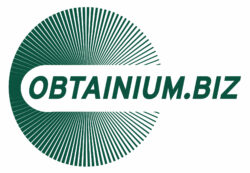The Controversy of CO2 Pipeline Projects in the US Heartland
In recent years, the rise of carbon capture, utilization, and storage (CCUS) projects has become a pivotal topic in environmental and energy discussions. Among the various projects proposed, the Summit Carbon Solutions CO2 pipeline aims to transform carbon reductions by sequestering emissions from ethanol plants. However, the project has sparked significant controversy, mirroring challenges faced by similar initiatives such as Navigator CO2 Ventures' recently canceled Heartland Greenway CO2 pipeline.
Regulatory and Community Challenges
The Summit Carbon Solutions project proposes a 2,000-mile CO2 pipeline, intending to capture emissions from 57 ethanol plants across several states and store them in central North Dakota. Despite its environmental promise, the project faces numerous regulatory and permitting obstacles. Regions like North Dakota and South Dakota have denied permits, and other states, such as Iowa and Minnesota, continue to scrutinize project applications amidst substantial community resistance.
Landowner and community opposition remains one of the most formidable hurdles. Concerns over eminent domain, potential pipeline failures, and adverse effects on agriculture provoke significant resistance. Several counties have actively opposed the use of eminent domain powers for these projects, highlighting the clash between infrastructural ambitions and local rights.
Environmental and Safety Considerations
Environmental groups express worries about the potential disturbances during pipeline construction. Issues such as subsoil compaction, impaired soil integrity, and changes in groundwater levels threaten long-term environmental health and recovery. Safety is a significant concern as well, illustrated by the dangerous rupture of a CO2 pipeline in Satartia, Mississippi, which led to serious evacuations and hospitalizations.
CO2 pipelines, unlike traditional pipelines, carry additional safety risks due to the high-pressure nature of the transported gas. Such safety concerns serve as a pivotal point in debates, intertwining with broader policy implications that aim to address these emerging challenges while promoting environmental protection.
Economic Promises and Regulatory Complexities
Despite the controversies, the economic incentives tied to the Summit project cannot be ignored. The promise of over 11,000 construction jobs and more than 1,000 operational positions, alongside potential earnings for ethanol producers through CO2 sales and qualifying products as net-zero, presents appealing economic prospects. Moreover, the reliance on federal incentives, particularly tax credits worth billions under the Internal Revenue Code's Section 45Q, underscores the project's financial stakes.
However, the project's success is hampered by a fragmented federal regulatory framework and inconsistent state policies. This lack of a unified approach complicates permitting processes across different jurisdictions, with states like Nebraska lacking comprehensive regulatory structures for CO2 pipelines altogether. This regulatory labyrinth stalls progress and raises broader questions about policy coherence as the US strives for significant emissions reductions.
Broader Policy Implications
The Summit Carbon Solutions project exemplifies the complexities inherent in advancing CCUS technology as part of broader climate strategies. The Biden administration's emissions reduction targets heavily rely on these technologies, positioning the pipeline's fate as a litmus test for future sustainable finance and green energy initiatives. The regulatory challenges and community pushback highlight the critical need for collaborative solutions that balance economic growth, environmental integrity, and social acceptability.
In sum, the ongoing controversies surrounding the Summit project mirror larger national and global issues in the quest for sustainable energy futures. Addressing these challenges calls for a nuanced approach, uniting governmental policy, community engagement, and technological innovation to pave the way for responsible, forward-thinking energy solutions.

